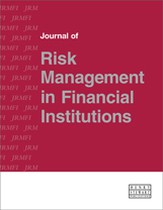Legal and regulatory update: Global identification standards for counterparties and other financial market participants
Abstract
Financial regulators are focused on observing systemic risk across enormously complex interconnected global financial institutions. It is understood that without an ability to view the underlying positions and cash flows, valued in standard ways and aggregated by counterparty through common identifiers, neither risk triggers nor risk exposures can be observed nor can systemic threats be detected. It has been accepted by regulators that the very first pillar of global financial reform is a standard for identifying the same financial market participant to each regulator in the same way. Getting agreement on a globally unique and standardised legal entity identifier (the LEI) is the first step. This paper reports on past and current efforts to develop a global identification system for such a purpose. The authors argue for a government/industry partnership in which governance is shared and operating elements of the global identification system are compartmentalised for control, security and confidentiality purposes. The paper demonstrates a proposed global identification system that satisfies all known elements of regulators' requirements for the LEI and also lays the foundation for accommodating other attributes, such as business ownership hierarchical structures and contract and instrument identification.
The full article is available to subscribers to the journal.
Author's Biography
Allan D. Grody is a founding board member of the Journal of Risk Management in Financial Institutions, founding professor (retired) of New York University’s graduate course in risk management systems, and founding partner (retired) of Coopers & Lybrand’s financial services consulting practice. He began his business career in General Electric’s finance business and later went on to hold increasingly responsible positions in investment management, the securities industry and international banking. He is President of Financial InterGroup Advisors and Financial InterGroup Holdings Ltd, and an advisory board member of ARC Best Practices Ltd.
Peter J. Hughes is a chartered accountant and managing director of the UK risk software and consulting firm, ARC Best Practices Limited. He was formerly a banker with JP Morgan Chase, where he held country and area management positions in Europe and South America encompassing audit, operations, finance and risk management.
Citation
Grody, Allan D., Hughes, Peter J. and Reininger, Daniel (2012, June 1). Legal and regulatory update: Global identification standards for counterparties and other financial market participants. In the Journal of Risk Management in Financial Institutions, Volume 5, Issue 3. https://doi.org/10.69554/OILJ1798.Publications LLP
